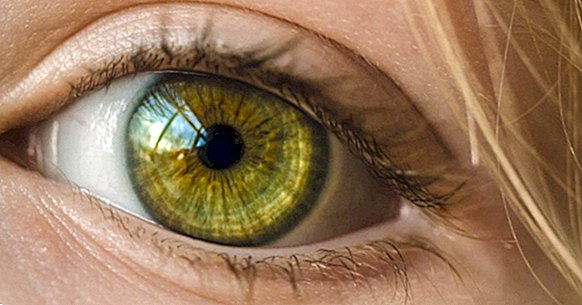Gaydar: can we detect the sexual orientation of others?
The popularly known as gaydar is a kind of sixth sense that allows to detect if someone is or is not homosexual at a glance. There are many people, both homosexuals and heterosexuals, who claim to be able to deduce this information and have a "smell" for sexuality.
Psychologists, as good scientists, ask ourselves what happens when someone affirms with such certainty that they know the sexual orientation of others.
Is it a skill that we have developed when homosexuality is visualized and an identity built around it? Could it be that our gaydar is not really as infallible as we think? And if so, on what do we base our judgments when we are so sure of having deduced with what kind of people does the other person have sex?
Gaydar based on facial features
There are different interpretations of how gaydar works . One of the explanations says that the faces of heterosexuals and homosexuals, both men and women, are different. People, by detecting these morphological differences, would be able to discern sexual orientation.
This capacity has been brought to laboratory conditions on several occasions with moderately positive results. Even showing only concrete features of the face Like the eyes, the nose or just the mouth, the participants are able to deduce sexual orientation and guess more than half the time.
This explanation is not free from criticism. Many researchers believe that more than feature characteristics, what participants judge is contextual information that is congruent with homosexual stereotypes . For example, the presence of a well-groomed beard, the emotional expressiveness of the face, etc., is the information that the subjects use to judge, rather than the morphology of the face. Unfortunately, we do not know with certainty if gaydar based on facial information responds to traits or stereotypical characteristics.
Gaydar based on stereotypes
Talking about stereotypes, this is the second way that theorists and researchers propose as a means to deduce sexual orientation. From this perspective, gaydar is the phenomenon that occurs when the individual judges the other's sexuality based on how many stereotypes it fulfills. These stereotypes do not emerge from nothing, but are socially constructed . In addition to being hurtful or reductionist, homosexual stereotypes serve to form differential categories.
Social categories, although they may be useful because they allow us to organize reality in an economic way, generate prejudices. To differentiate between categories we need observable attributes that allow us to differentiate the categories with the naked eye. As Homosexuality is not a tangible property , we attribute other features to this category. For example, the presence of feminine mannerisms and gestures, the caring aspect or the form of emotional expression. Although in some cases they may be true, they do not correspond to the entire homosexual population.
The gaydar could consist of a deduction through these stereotypes, which besides making us err on many occasions, are harmful to the homosexual collective because of its reductionism . Grosso modo, although the presence of "homosexual characteristics" predicts sexual orientation, we leave out all those gays who do not fulfill the stereotype. Because of this, we only get confirmation that we have judged stereotypical gays, arriving at the false illusion that our gaydar is infallible.
- Maybe you're interested: "The brain of bisexuals has its own characteristics"
The scientific evidence
Although the studies on this matter are not many, the evidence is contradictory. As we have seen before, there are investigations that find a slight effect in the correct differentiation of facial features of homosexuals and heterosexuals. However, the inspection of the face does not explain all the functioning of the gaydar. The most complete explanation is offered via stereotypes .
In this line, a study in this regard conducted a series of 5 experiments to examine the feasibility of hypotheses based on facial features and stereotypes. This study found no evidence in favor of the recognition of sexual orientation through facial features. Moreover, it is hypothesized that the ability to recognize sexual orientation in previous studies that do find an effect has more to do with the way in which the subject is presented in the photo and the quality of the photograph, than in their own traits
In this same study it is found that, in judging orientation, gaydar is based on stereotypes.People incur stereotypes without realizing it, hence the feeling of gaydar is more like an intuition that the subject does not know why it has, instead of a logical deduction . Likewise, in those essays in which the researchers affirm the existence of a gaydar, the participants emit more judgments based on stereotypes, whereas when the researcher denies the existence of gaydar, the judgments are much less stereotypical.
- Related article: "" Heuristic ": the mental shortcuts of human thought"
Reviews and dangers
The term itself may be perpetuating judgments based on stereotypes. We know that gaydar is nothing more than a biased and prejudiced form of intuition. When given a proper name, we forget that it is a phenomenon based on stereotypes. By granting it the status of sixth sense its use is generalized and it is perceived as innocuous, when in a paradoxical way the stereotypes towards the homosexual population are perpetuated and increased. When talking about gaydar we incur the danger of legitimizing a social myth.
To begin with, any reasoning based on stereotypes is of little use when we talk about a complex aspect of identity. Statistically speaking, for a stereotypically gay attribute (imagine "take care of the skin") is useful to identify homosexuals, it should be something that happens 20 times more in the homosexual population than in the heterosexual. For this reason, to believe in the existence of a gaydar is typical of fallacious reasoning.
We can not miss the opportunity to comment on how the maintenance of these stereotypes are harmful to social progress and the visibility of all forms of sexuality. For understand a phenomenon such as sexual orientation in all its complexity It is necessary to get rid of shortcuts. We know that as we categorize reality, we see it that way. Stereotypes anchor us cognitively and do not allow us to see beyond the categories we know. The visibility of sexual diversity happens precisely because of the break with these categories.
As with gender, it is not a question of ceasing to use categories, but of not assigning rigid expectations or stereotypes that constrain the ways in which the identity of each one is manifested. Overcome these cognitive barriers It means being able to understand sexual orientation for what it is: a simple matter of preference in sexual relationships regardless of the way you view it, the gestures you use and how much you care for your body. This is a sine qua non condition for integration.
- Maybe you're interested: "5 myths about homosexuality disassembled by science"
Bibliographic references:
- Cox, W. T. L; Devine, P. G; Bischmann, A. A; Hyde, J. S. (2015). Inferences About Sexual Orientation: The Roles of Stereotypes, Faces, and The Gaydar Myth. The Journal of Sex Research, 53 (2), pp. 157-171.



















